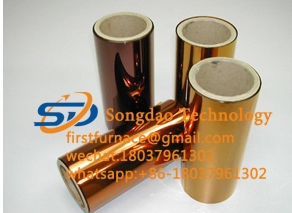- 01
- Nov
Preparation and characteristics of polyimide film/graphene polymer material
Preparation and characteristics of polyimide film/graphene polymer material
According to reports, the preparation methods of polyimide/graphene composite materials are generally: solution blending, in-situ polymerization and melt blending.

(1) Solution blending
Solution blending: After mixing graphene and graphene derivatives to disperse them in a polymer solution, and then removing the solvent, the corresponding polymer nanocomposite materials can be prepared. Because graphene has almost no solubility, and graphene is prone to interlayer aggregation. Therefore, researchers have introduced organic functional groups into the structure of graphene to increase the solubility of graphene and graphene derivatives. Because graphene oxide is water-soluble, it can be directly blended with its colloidal solution and water-soluble polymer aqueous solution. After mixing, ultrasonic treatment and molding processes, the prepared polymer/graphene oxide composite material has excellent mechanical properties . In the preparation of graphene oxide and water-insoluble polymers through blending to prepare composite materials, the organic function of graphene oxide is increasingly helpful to improve its solubility in organic solvents and a strong combination with polymers.
(2) In-situ polymerization
The biggest difference between the solution blending method and the in-situ polymerization method is that the process of polymer synthesis and the mixing of graphene or graphene derivatives are carried out at the same time, and the polymer chains formed by the polymerization and graphene or graphene derivatives have different appearances. Strong covalent bond effect. The polymer/graphene composite material obtained by this method has a stronger interface effect, so its generalization function has been significantly improved. Among them, the polymer/graphene composite materials prepared by using nylon-6, polystyrene, epoxy resin, etc. as the polymer matrix are all prepared by in-situ polymerization.
(3) Melt blending
In the process of melt blending, the polymer/graphene composite material can be prepared without solvents. It only needs to mix graphene or graphene derivatives and the polymer in the molten state under the effect of high temperature and high shearing force. It is reported that a variety of polymers (such as polyester and polycarbonate, polyethylene 2,6-naphthalate)/functional graphene composite materials have been prepared by melt blending. I also tried melt blending and compounding of polylactic acid/graphene and polyethylene terephthalate/graphene materials. Although this method can realize large-scale preparation despite its simple operation, the graphene sheet is broken due to the high shear force effect during the preparation process.
